
Marquess of Linlithgow, in the County of Linlithgow or West Lothian, is a title in the Peerage of the United Kingdom. It was created on 23 October 1902 for John Hope, 7th Earl of Hopetoun. The current holder of the title is Adrian Hope.

Earl of Lonsdale is a title that has been created twice in British history, firstly in the Peerage of Great Britain in 1784, and then in the Peerage of the United Kingdom in 1807, both times for members of the Lowther family.

Viscount Massereene is a title in the Peerage of Ireland. It was created in 1660, along with the subsidiary title of Baron Loughneagh. From 1665 to 1816 the Skeffington Baronetcy of Fisherwick was attached to the viscountcy and from 1756 to 1816 the Viscounts also held the title of Earl of Massereene. Since 1843 the peerages are united with titles of Viscount Ferrard, of Oriel and Baron Oriel, both in the Peerage of Ireland, and Baron Oriel, in the Peerage of the United Kingdom. The Viscount also holds the subsidiary titles of Baron Loughneagh (1660) and Baron Oriel (1790) in the Peerage of Ireland and Baron Oriel (1821) in the Peerage of the United Kingdom. As Baron Oriel, he sat in the House of Lords until 1999.
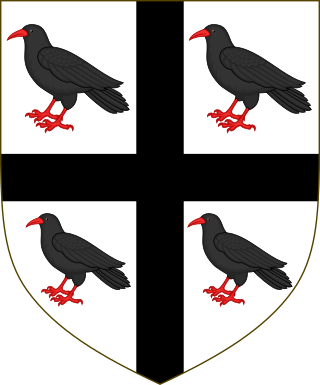
Lord Aylmer, Baron of Balrath, in the County of Meath, is a title in the Peerage of Ireland. It was created in 1718 for the naval commander Matthew Aylmer, the second son of Sir Christopher Aylmer, 1st Baronet, of Balrath. Lord Aylmer's son, the second Baron, represented Rye in the House of Commons. The latter's grandson, the fourth Baron, succeeded his kinsman as seventh Baronet, of Balrath, in 1776. The titles remain united. He was succeeded in both titles by his son, the fifth Baron. He was a general in the Army and served as Governor General of Canada from 1830 to 1835. Lord Aylmer assumed by Royal licence the additional surname of Whitworth in 1825 on the death of his uncle Charles Whitworth, 1st Earl Whitworth. On his death, the titles passed to his younger brother, the sixth Baron. He was an admiral in the Royal Navy.

Baron Kilmaine is a title that has been created twice, both times in the Peerage of Ireland. The first creation came in 1722 in favour of the soldier the Hon. James O'Hara. Two years later he succeeded his father as Baron Tyrawley. However, both titles became extinct on the second Baron Tyrawley's death in 1773 without legitimate sons.

Baron Farnham, of Farnham in the County of Cavan, is a title in the Peerage of Ireland. It was created in 1756 for John Maxwell, who had previously represented Cavan Borough in the Irish House of Commons. John Maxwell's son, the second Baron, was created Viscount Farnham in 1760 and Earl of Farnham in 1763. Both titles were in the Peerage of Ireland but became extinct when he died childless in 1779. His brother and successor, the third Baron, was again created Viscount Farnham in 1781 and Earl of Farnham in 1785. These titles were also in the Peerage of Ireland. His son, the second Earl, sat in the House of Lords as an Irish Representative Peer from 1816 to 1823. However, he had no children and on his death in 1823 the viscountcy and earldom became extinct.
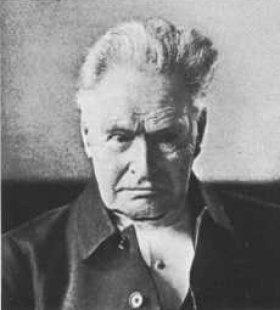
Baron Grimthorpe, of Grimthorpe in the East Riding of the County of York, is a title in the Peerage of the United Kingdom. It was created on 17 February 1886 for the lawyer and architect Edmund Beckett, 5th Baronet, with remainder to the heirs male of his father. He was succeeded according to the special remainder by his nephew, the second Baron. He had earlier represented Grimsby in Parliament. As of 2014 the titles are held by the latter's great-grandson, the fifth Baron, who succeeded his father in 2003.

Baron Glanusk, of Glanusk Park in the County of Brecknock, is a title in the Peerage of the United Kingdom. It was created in 1899 for Sir Joseph Bailey, 2nd Baronet, who had earlier represented Herefordshire and Hereford in the House of Commons as a Conservative. Both his son, the second Baron, and grandson, the third Baron, served as Lord Lieutenant of Brecknockshire. The latter was succeeded by his first cousin, the fourth Baron. He was the son of the Hon. Herbert Crawshay Bailey, fourth son of the first Baron. As of 2010 the titles are held by his son, the fifth Baron, who succeeded in 1997.

Baron Glenconner, of The Glen in the County of Peebles, is a title in the Peerage of the United Kingdom. It was created in 1911 for Sir Edward Tennant, 2nd Baronet, who had earlier represented Salisbury in the House of Commons as a Liberal and also served as Lord Lieutenant of Peeblesshire. Lord Glenconner was succeeded by his second son, the second baron. The latter was succeeded in 1983 by his eldest son, the third baron, who bought the island of Mustique. As of 2014, the titles are held by the third baron's grandson, the fourth baron, who became the next-to-youngest peer in the realm when he succeeded in August 2010.
Baron Wolverton, of Wolverton in the County of Buckingham, is a title in the Peerage of the United Kingdom. It was created in 1869 for the banker George Glyn. He was the fourth son of Sir Richard Carr Glyn, 1st Baronet, of Gaunt's House, Lord Mayor of London in 1798, himself the fourth son of Sir Richard Glyn, 1st Baronet, of Ewell, Lord Mayor of London in 1758. Lord Wolverton was succeeded by the eldest of his nine sons, the second Baron. He was a Liberal politician and served under William Ewart Gladstone as Paymaster General and as Postmaster General. He was childless and was succeeded by his nephew, the third Baron. He was the eldest son of Vice-Admiral the Hon. Henry Carr Glyn, younger son of the first Baron. He died childless the following year aged only twenty-six, and was succeeded by his younger brother, the fourth Baron. He served as Vice-Chamberlain of the Household from 1902 to 1905 in the Conservative administration of Arthur Balfour. On the death in 1988 of his second but eldest surviving son, the fifth Baron, this line of the family failed. The title was inherited by the late Baron's second cousin, the sixth Baron. He was the grandson of the Hon. Pascoe Glyn, younger son of the first Baron. As of 2011 the title is held by his grandson, the eighth Baron, who succeeded in 2011.
Baron Swansea, of Singleton in the County of Glamorgan, is a title in the Peerage of the United Kingdom and held by a branch of the Vivian family. It was created on 9 June 1893 for the industrialist Sir Henry Vivian, 1st Baronet. He had already been created a Baronet, of Singleton in the County of Glamorgan, on 13 May 1882. He was succeeded by his eldest son, the second Baron. On his death the titles passed to his half-brother, the third Baron. As of 2014 the titles are held by the latter's grandson, the fifth Baron, who succeeded his father in 2005.
Baron Mostyn, of Mostyn in the County of Flint, is a title in the Peerage of the United Kingdom. It was created in 1831 for Sir Edward Lloyd, 2nd Baronet, who had earlier represented Flint Boroughs and Beaumaris in the House of Commons. His son, the second Baron, sat as a Member of Parliament for Flintshire and Lichfield and served as Lord Lieutenant of Merionethshire.
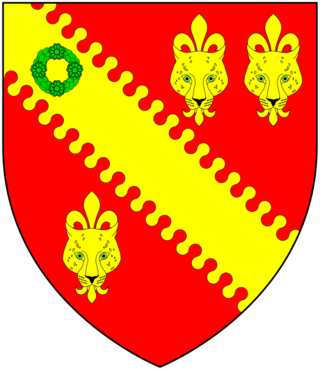
Baron Tennyson, of Aldworth in the County of Sussex and of Freshwater in the Isle of Wight, is a title in the Peerage of the United Kingdom. It was created in 1884 for the poet Alfred Tennyson. His son, the second Baron, served as Governor-General of Australia, and his grandson, the third Baron, as a captain for the English cricket team. On the death in 2006 of the latter's younger son, the fifth Baron, the line of the eldest son of the first Baron failed. The title was inherited by the late Baron's second cousin once removed, the sixth and present holder of the peerage. He is the great-grandson of Hon. Lionel Tennyson, second son of the first Baron.
Baron Congleton, of Congleton in the County Palatine of Chester, is a title in the Peerage of the United Kingdom. It was created in 1841 for the Whig politician and former Secretary at War and Paymaster of the Forces Sir Henry Parnell, 4th Baronet. His eldest son, the second Baron, devoted his life to religious work and was an early member of the Plymouth Brethren. The latter was succeeded by his younger brother, the third Baron. He served in the Royal Navy and fought at the Battle of Navarino in 1827. His eldest surviving son, the fourth Baron, was a major-general in the British Army and served in the Crimean War and in the Anglo-Zulu War. The latter's eldest son, the fifth Baron, was killed in action in Ypres Salient during the First World War and was succeeded by his younger brother, the sixth Baron. As of 2015, the titles are held by the latter's grandson, the ninth Baron, who succeeded his father in 2015.

Earl of Sussex is a title that has been created several times in the Peerages of England, Great Britain, and the United Kingdom. The early Earls of Arundel were often also called Earls of Sussex.
There have been five Baronetcies created for people with the surname Forbes, four in the Baronetage of Nova Scotia and one in the Baronetage of the United Kingdom. The first holder of the Burn Baronetcy of Jessfield, created in the Baronetage of the United Kingdom in 1923, assumed the surname of Forbes-Leith of Fyvie in 1925.
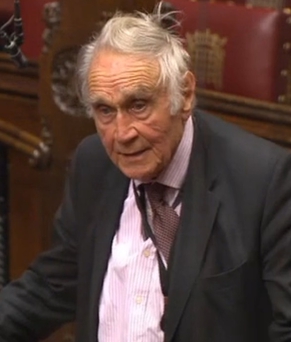
Christopher George Walter James, 5th Baron Northbourne, 6th Baronet, DL, FRICS, was a British farmer and aristocrat. He was one of the ninety hereditary peers elected to remain in the House of Lords after the passing of the House of Lords Act 1999 until his retirement in 2018, and sat as a crossbencher.
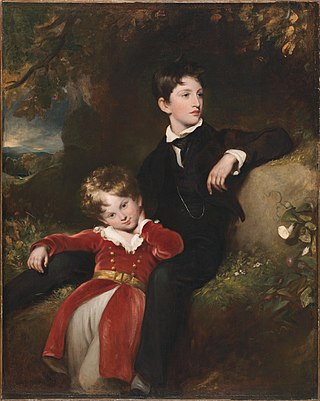
Walter Charles James, 1st Baron Northbourne, known as Sir Walter James, 2nd Baronet, from 1829 to 1884, was a British Member of Parliament.

Walter Henry James, 2nd Baron Northbourne DL, was a British peer and Liberal politician.
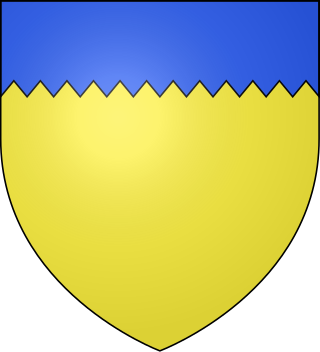
Butler is the name of a noble family whose members were, for several centuries, prominent in the administration of the Lordship of Ireland and the Kingdom of Ireland. They rose to their highest prominence as Dukes of Ormonde. The family has produced multiple titles such as Baron Cahir, Baron Dunboyne, Viscount Ikerrin, Viscount Galmoye, Viscount Mountgarret, Viscount Thurles, Earl of Carrick, Earl of Kilkenny, Earl of Ormond, Earl of Ossory, Marquess of Ormonde and Duke of Ormonde. Variant spellings of the name include le Boteler and le Botiller. The Butlers were descendants of Anglo-Norman lords who participated in the Norman invasion of Ireland in the 12th century. The surname has its origins in the hereditary office of "Butler (cup-bearer) of Ireland", originating with Theobald Walter, 1st Chief Butler of Ireland. The arms of later family members depicted three cups in recognition of their original office.


















